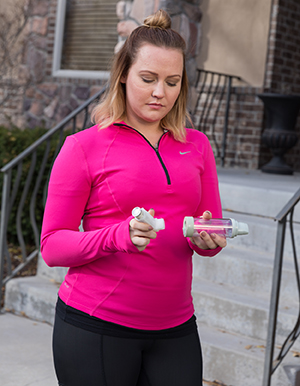Asthma and Exercise
Asthma is a long-term (chronic) condition causing swelling and narrowing of the airways. The muscles around the airways tighten, the lining of the airways swells, and extra mucus is produced. These changes make it harder to breathe. Triggers are things that cause asthma flare-ups and make symptoms worse. Triggers may be dust, pollen, pets, infections, cold weather, smoke, air pollution, and exercise.
Exercise is a common trigger for many people with asthma. For some people, exercise, along with other things, causes asthma symptoms. For others, asthma symptoms happen only with exercise or physical activity. In both cases, this is called exercise-induced bronchoconstriction (EIB). (It used to be called exercise-induced asthma.) This means that exercise causes the airways (bronchi) to narrow or constrict.
Living with EIB doesn't mean you need to give up exercise. Exercise is important for overall good health. It also helps keep the lungs and muscles used for breathing strong. Your body needs exercise. Work with your health care provider to develop an exercise program that allows you to exercise safely with as few symptoms as possible.

The cause of EIB
Experts don't know exactly why exercise causes the airways to narrow. When exercising, the increased breathing in and out through the mouth may cause the airways to dry and cool. This may irritate them and cause symptoms. This is especially true when exercising outside in cold weather. Breathing in air pollution, chemicals, or allergens, such as pollen, may be a factor. You breathe more when you exercise. So a larger amount of possible triggers are breathed in.
Symptoms of EIB
EIB symptoms are the same as asthma symptoms. They include coughing, wheezing, and chest tightness 5 to 20 minutes after starting exercise. In some people, the symptoms can start after exercise. This is often the case if the exercise is strenuous and short. EIB can also include symptoms such as extra tiredness (fatigue) and feeling short of breath during or after exercise.
But that doesn't mean you should stop exercising. In fact, exercise is very helpful for people with asthma. It can improve your airway function by strengthening your breathing muscles. Talk with your health care provider for more information.
Controlling EIB
You can do things to help control EIB or asthma symptoms when exercising. First, make a plan with your health care provider. And make sure you:
-
Start slowly. Warm up before you start your actual exercise. And slowly cool down at the end of the exercise or activity.
-
Carry your quick-relief inhaler with you. Use it 15 minutes before you start exercising or as your provider recommended.
-
Use daily controller medicines for EIB, if prescribed. If you take them, take them exactly as told.
-
Think about exercising indoors if it is very cold. Or stay inside if pollution or allergen levels are high.
-
If you do exercise outside during cold weather, wear a scarf over your mouth and nose. Some people also use a special device or mask to exercise outdoors when it is very cold.
-
Don't exercise when you're sick.
Suggested sports and activities
Any activity can cause asthma symptoms. Sports and activities with short bursts of activity are often better for people with asthma. Some sports may be less likely to trigger symptoms. Swimming is one of them. The warm, humid environment, the use of upper-body muscles, and the body position while swimming may be good for people with asthma (exercise-induced or not). (For some people, though, the chemicals used to treat swimming pools are a problem.) Other suggested activities and sports include:
Sports that may increase the chance of symptoms include:
-
Basketball.
-
Cross-country skiing.
-
Ice hockey.
-
Long-distance running.
-
Soccer.
But with the right management and preparation, most people with EIB can do any sport or physical activity safely.